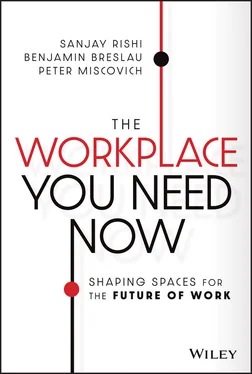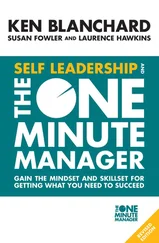Companies with sizable remote work programs were the exceptions. In advanced economies, only a small share of the workforce – typically 5–10 percent – regularly worked from home before the pandemic. ivOur comfort with remote work has improved by necessity and through advancements in connectivity, collaboration, and management technologies.
Companies across industries are now refining their remote work policies in response to employee expectations and the demands of their businesses. Many are likely to embrace increased workplace flexibility as a talent recruitment and retention strategy, and to open the door to working with the best talent regardless of location – an inevitable shift accelerated by the pandemic.
Some of the progressive companies leaning into the remote workplace are the very companies that provide enabling technology for remote working and virtual collaboration. Dropbox, for example, has shifted to a “virtual first” workplace, allowing employees to perform their individual work remotely and return to physical office hubs for collaboration and team-building purposes.
“Demand is coming back,” says Andy Gloor, CEO of Sterling Bay, a leading owner/operator real estate investment and development company that Crain’s Chicago Business calls “Tech industry’s go-to real estate developer.” Recent high-profile projects completed by Sterling Bay under Gloor’s leadership include corporate headquarters for McDonald’s and Google.
Gloor’s clients are convinced that “culture, brand, and teamwork just don’t work in a remote work environment,” he says. While Gloor does agree that some job profiles may be appropriate for work from home, he sees the vast majority of his clients, leading corporations and global leaders amongst them, continuing to build their success and future with talent coalescing in the workplace. He also sees some clients that had densified their spaces to high degrees now have additional space requirements to allow for social distancing in the workplace.
Emerging from the pandemic, companies face new urgency to tackle the complex journey to the future of work. Forward-looking companies are creating hybrid workplace strategies that blend remote and on-site working and, ideally, boost employee performance by providing workspace choice. Also important, companies recognize that their workplace strategies won’t necessarily be static. Always-on transformation will likely become the new imperative as employees embrace the idea that work is something you do, not a place you go – and sometimes the work you do is best done in the office setting.
In the future of work, many companies will pursue talent strategies based on geographically dispersed full-time employees and on-demand “liquid workforce” of people who may or may not ever set foot in the corporate office. “Talent anywhere” is now being considered as a legitimate component of corporate workforce strategy, looking beyond geographic borders to find the best employees who may be fully remote or in ecosystems of talent clusters in multiple dispersed locations.
Amidst a continuing global war for talent, employers will need to shape the workplace at least partially around the needs of employees, rather than vice versa. Health, wellbeing, work-life balance, corporate responsibility, and a sense of purpose have become more important than compensation alone as motivations for working and must be reflected in day-to-day work experience. Companies must determine how and where to provide the right kinds of workplace and workspace options for their unique talent networks.
Our research vshows that most companies plan to embrace a new hybrid workplace strategy, in which the office will remain central and critical in an ecosystem of workers and workplaces (see Figure 1.1). New strategies are essential to meeting employee expectations, with 79 percent of employees reporting that they want to be able to come into the office at least some of the time. Moving forward, the big question for companies and employees will be how to make the hybrid workplace enable, align, and empower teams to drive enterprise and employee value. Companies seeking to drive purpose and performance will need to focus on the principles of personalization, corporate responsibility, and a multidimensional workplace experience.

Figure 1.1 The Evolving Workplace Ecosystem Hybrid working likely involves working in the corporate office most of the time and working at home or elsewhere – a coffee shop, an airport lounge, a coworking space, for example – at other times.
1 i “History of Office Design,” K2space, November 1, 2019, https://k2space.co.uk/knowledge/history-of-office-design/.
2 ii Kaley Overstreet, “A Brief History of Workplace Design and Where It Might Be Headed Next,” Archdaily, May 29, 2020, https://www.archdaily.com/940538/a-brief-history-of-workplace-design-and-where-it-might-be-headed-next.
3 iii Nikil Saval, “The Cubicle You Call Hell Was Designed to Set You Free,” Wired, Conde Nast, April 23, 2014, https://www.wired.com/2014/04/how-offices-accidentally-became-hellish-cubicle-farms/.
4 iv Susan Lund, Anu Madgavkar, James Manyija, and Sven Smit, “What’s Next for Remote Work: An Analysis of 2,000 Tasks, 800 Jobs, and Nine Countries,” McKinsey & Company, March 3, 2021, https://www.mckinsey.com/featured-insights/future-of-work/whats-next-for-remote-work-an-analysis-of-2000-tasks-800-jobs-and-nine-countries.
5 v Flore Pradère, JLL Research, “Worker Preferences Barometer,” JLL, May 2021, https://www.us.jll.com/content/dam/jll-com/documents/pdf/research/global/jll-global-worker-preferences-barometer-may-2021-updated.pdf.
Конец ознакомительного фрагмента.
Текст предоставлен ООО «ЛитРес».
Прочитайте эту книгу целиком, купив полную легальную версию на ЛитРес.
Безопасно оплатить книгу можно банковской картой Visa, MasterCard, Maestro, со счета мобильного телефона, с платежного терминала, в салоне МТС или Связной, через PayPal, WebMoney, Яндекс.Деньги, QIWI Кошелек, бонусными картами или другим удобным Вам способом.













